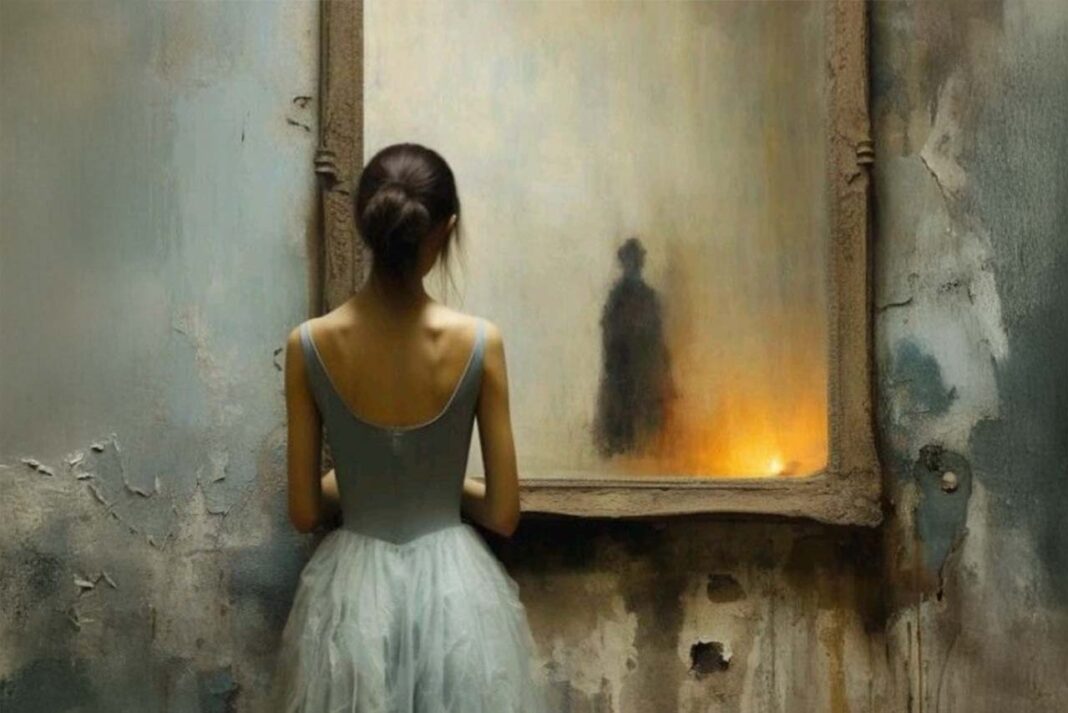Seeing non-existent people and events, hearing non-existent voices, being uncertain about reality… Hallucinations can perhaps be considered one of the most striking symptoms of psychology. They refer to the perception of non-existent stimuli in the external world as real. First defined as a clinical term by Jean-Étienne Esquirol (1832), this concept, which has been studied and debated by numerous theorists in the psychological literature, will be examined in this article primarily within the framework of psychoanalysis. We will examine how Sigmund Freud and Jacques Lacan discussed this term in their respective theories.
This phenomenon, which causes us to question the fragile reality around us, has also been used in the field of art, strengthening narrative and allowing the audience or reader to see the character’s layers. In understanding this term within a psychoanalytic framework, we will draw on examples from various works of art. We will also examine the functions of hallucinations in art.
What Did Freud Say About Hallucinations?
According to Freud, hallucinations represent a state in which reality is suspended and the pleasure principle dominates. Described as similar to dreams, hallucinations are interpreted as the return of repressed desires. They aim to either return to the subject in the form of hallucinations or provide gratification for desires repressed by unconscious mechanisms.
Hallucinations, as defined by Freud, have also found their way into works of art. In many works, we see hallucinations depicting a character’s hidden, forgotten, and repressed desires. Through this narrative, the character detaches from reality and reveals to the audience their world, dominated by the pleasure principle. Hallucinations can also be used to represent traumas. This provides us with more aesthetic insight into the character’s background.
To better understand this theory, let’s look at Dostoyevsky’s book Demons. Stavrogin, the main character in this book, can be seen as an example of a strictly Freudian explanation of hallucinatory content. Stavrogin’s hallucinations are rendered both auditory and visual, and their subject matter is related to the crimes he commits.
It would be a good idea to pause here and briefly examine the concept of crime. Crime, in its simplest form, can be defined as the violation of socially accepted rules. These social decisions are governed by reality, and as subjects, people sacrifice their pleasures to comply with these rules. This sacrifice is not made without reward; foregoing pleasure has its secondary benefits. Of course, these issues are matters that circulate at our unconscious level, but they can be issues that every subject experiences ambivalence as a result.
Stavrogin is torn between reality and the pleasure principle. The desires he had repressed in most of his lives, the dominance of the pleasure principle, have taken over his life, and he has chosen to commit these crimes. This ambivalence has given rise to guilt. Hallucinations represent the transformation of these unconscious processes and their return to Stavrogin’s life.
What Does Lacan Say About Hallucinations?
Lacan describes hallucinations not only as the return of the repressed, but also as times when the Real reveals itself, seeping through the cracks of the symbolic realm. So what does this mean?
In his theory, Lacan describes three realms of experience. These are also called registers. These three realms are the layers that structure the subject’s experience. The symbolic realm is the layer dominated by language. Law, society, and culture are also found here. Desires are structured here, and the subject is defined not by pure instinctual pleasure but by the existence of language and social relations. The imaginary realm is where the subject forms the ego and the sense of complete self. However, completeness is an illusion, and this illusion is necessary for the formation of the ego. Concepts such as identification, the artistic image, and the ego ideal belong here. The real is a realm beyond language and imagery, a realm that cannot be depicted. Lacan refers to this as the excess in the subject’s experience; it cannot be symbolized or imagined, and therefore cannot be fully understood. Therefore, traumas and hallucinations are depicted as reflections of the real. In short, when the subject cannot symbolize or imagine an experience, it comes from outside as auditory (symbolic) or visual (imaginary) stimuli.
Samuel Beckett’s novel Molloy is a valuable resource for understanding many of the themes Lacan explores in his theory of hallucinations.
The book’s protagonist, Molloy, is elderly, ill, and increasingly immobile. He struggles to write about his life’s journey in a room at his mother’s house (or rather, inside his own mind). In this piece, he discusses his move from the city to the countryside, his physical weaknesses, his social disharmony, and the increasing disorganization of his thoughts.
Molloy is actually more than a character or a novel, but a figure that depicts the subject’s dissolution: he occasionally struggles to recognize his own body, experiences auditory hallucinations, and begins to detach from reality. Throughout the novel, Molloy repeats his narrative, progressing with deviations and illogical leaps. Language reigns supreme in Lacan’s symbolic, and these ruptures within language reveal the symbolic’s inability to be established.
At the same time, the character, alienated from his own body, speaks of his inability to recognize himself and of feeling fragmented. This highlights the problems experienced within the imaginary. Thus, we understand that Molloy does not symbolize or image his experiences. The encounter of hallucinations in this character’s natural progression is not surprising. The fact that Molloy’s experiences, which he cannot make sense of from the realm of the Real, emerge as hallucinations through external stimuli provides a comprehensive explanation of the concept of hallucination in Lacanian theory.
References
Freud, S. (1900/1953). The Interpretation of Dreams. Standard Edition, Vol. 4–5.
Lacan, J. (1955–56). The Seminar of Jacques Lacan, Book III: The Psychoses. Ed. J.-A. Miller.
Fink, B. (1997). A Clinical Introduction to Lacanian Psychoanalysis: Theory and Technique. Harvard University Press.



